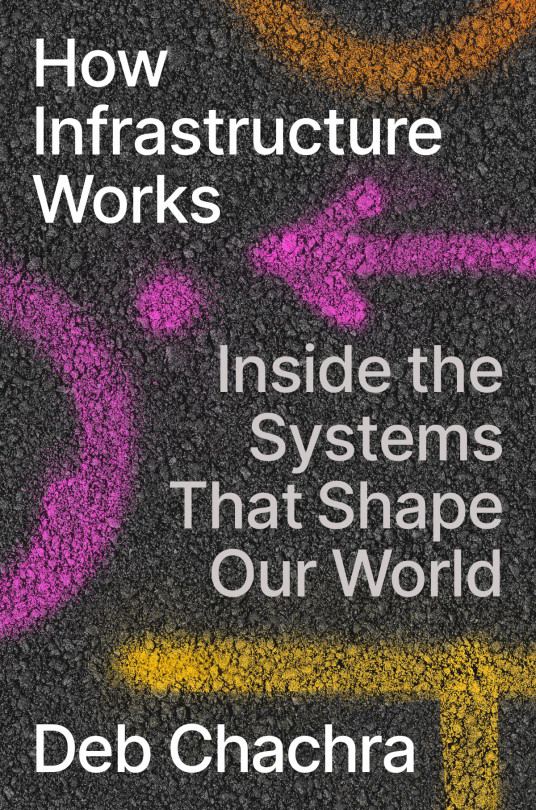#gift for a mutual
Text

434 notes
·
View notes
Text

I made this a while back and for some reason I was just holding on to it ┐(´ー`)┌ I don't know why, but I'm posting it now, because it seems like a good time to.
It just random thought that popped into my head and I began to draw it out and this is the result of it.
So here's another gift for @projectanimations
It's your Timothy and Alfred :D
Meeting my Alfred, don't worry he's just a very nervous guy. <:]
#ttte#thomas the tank engine#ttte corrupted au#ttte humanoid#ttte humanized#ghost alfred#alfred the ghost engine#timothy the ghost engine#timothy#ttte alfred#ttte timothy#gift for a mutual#gift for a friend
54 notes
·
View notes
Text

queen ace and prince jax~
25 notes
·
View notes
Text
@milo-suzuki-alt // @theyluvsmilo
I finally finished that art of Milo!!! In all it took 4 hours and 28 minutes








Started : 09/16/23
Finished : 10/10/23
#demon slayer#kimetsu no yaiba#kny#art#demon slayer oc#milo suzuki#gift for milo#milo fanart#kny oc art#kny oc#not my oc#artwork#digital artwork#digital artist#digital drawing#digital illustration#art for mutuals#already have an idea of who I'm drawing next#gift for a mutual#digital painting
18 notes
·
View notes
Note

Sorry I keep drawing your dogs (it will happen again)
.
#their little paws ;_;#the toes#and the mutual blep#they look so small and it's really activating my cute aggression instincts#I want to mush them together like balls of play-doh#also extra points for the lamb#✨🐑✨#gift art#arttsuka#own characters#Machete#Vasco
666 notes
·
View notes
Text
Dpxdc Au - Tim and Danny are Twins, have been through all the introductions and after a few years decide to have The Audacity.
At some point it hits the two of them, that they really do act alike sometimes. Like, mannerisms and small detail micro expressions, the whole nine, so Danny and Tim decide to take advantage of this.
Parent trap style swapping but all within the same household, they cut their hair and swap clothes, and get in a few practice runs around the halls of Wayne Manor. No one in the family catches them through at least 3 family dinners, so they go for the larger gambit.
Tim wants to go to high school for a bit and get back into skate boarding with low stakes- Thats what he tells Danny at least, he really wants to spend the time dismantling the GIW from the epicenter in Amity Park. It works out that Tim accomplishes this in record time (explosives didn’t require ethics in his opinion) and does actually get to enjoy his hobbies again for a bit.
Danny wants to tell off the WE board members and get some proper Red Robin training so he’s not so dependent on his powers when facing human enemies (they were squishier than ghosts, restraint was key)- That’s what he tells Tim when the reality is he’s going to lead a hostile takeover of DalvCo. and well, yeah, actually get some training in.
No one catches on except for Kon.
After they’ve swapped back and their missions are debriefed, Tim asks him why he never fell for it? Simply put: “Uh, dude. Your twin doesn’t have a heartbeat half the time, it was pretty easy to tell.”
#dc x dp crossover#dc crossover#dp crossover#dpxdc#dcxdp#danny phantom#tim and danny are twins au#this obviously only happens after a butt load of therapy by which danny admits that hes actually super smart#tim is like great dude let me help you out by taking down a government branch#what like its hard?#and danny is like great dude let me get you some assets from our enemies#as a treat for later#Tim and danny are incredibly similar but the purposefully lean into those differences on most days#the drakes gift danny to another rich couple who gift him away so many times until he is given to aunt alicia and is raised with the fentons#tim and danny looked at one another after meeting for the first time and were just mutually like 'meh might as well have a twin'#kon is 'good friends' with tim lmao#can be tim/kon if you want it to be that way
2K notes
·
View notes
Text






DAVE JONES as HALSIN SILVERBOUGH
— Baldur's Gate 3 (2023), Larian Studios
+ BONUS:


#dave jones#davejonesedit#halsin silverbough#halsinsilverboughedit#halsin#halsinedit#baldur's gate 3#baldur'sgate3edit#bg3#bg3edit#gamingedit#my gif.#useroaks#HERE’S YOUR MAN ERIN !!!#FOR ERIN <3#the only reason i made a gif in almost 3 years#i was going to gif astarion but i thought i'd give erin a gift to show how grateful i am for them :)#mutuals if you want to be tagged in bg3 stuff then let me know#(who knows if i will take another 3 year break after this lol)#this looks so shitty on mobile#please look at this on a desktop 😭
271 notes
·
View notes
Text
[ cw: violence mention / death mention / ]
Will never stop thinking about how Leo, all alone in an endless void and being beaten again and again and again by the only other living thing around, still finds comfort in that space. The situation he was in was completely hopeless, and in any other circumstances he would not have escaped, at least not fast enough to save him from permanent (or even fatal) damage, be it physical or mental.
And yet, despite the bleakness of his situation, despite the agony and helplessness, all he needs is one glance at a crumbled photograph, one glance to remember his family, and that’s enough of a reason for him to smile.
Maybe that’s why his powers center around manipulating space - because no matter how much space is between them, no matter how dire his own situation may be, just the thought of his family, alive and okay, is enough to give Leo hope.
#rottmnt#rise of the teenage mutant ninja turtles#rottmnt leo#rise leo#the prison dimension is horrifying on its own#add in a monstrous being that towers over you and has vowed to ensure your suffering?#god I can’t imagine how scary that is#Mikey opening the portal was a miracle because if he hadn’t managed it there#it’s really up in the air what could have become of Leo#personally I subscribe by the theory that you straight up can’t die in the prison dimension#so it’s a prison in all ways#but the thought of a Leo who manages anyway who adapts and continues to have hope despite it all…#Leo saying he’s nothing without his family is a double edged sword really#because the thought of his family alone is all he needs to live. to hope.#to smile#nothing without them…but they’re EVERYTHING to him#and maybe he doesn’t realize it but…the feeling is mutual#one thing too is that hope that comforts Leo so much is not just that#should he think his family needs help - that hope can turn into determination#I’m unwell about this family#actually on my point of their powers - I truly do think the abilities tie in not only to their personalities#but to their relationship to family and love in general#kinda like love languages in a way#Mikey with his chains and time abilities values being around his family the most - he wants them to experience living in the moment togethe#Donnie is someone who is 100% a gift giver to show his love - his constructs are exactly that aren’t they? gifts of his mind#Raph is someone who willingly bears the weight of the shield - he protects his family like the best big brother possible#and Leo - he goes off on his own a lot but his mind is constantly on his family anyway#like a sailor at sea no matter how far he travels the compass always point in one direction - and for him that compass points home#even if he can’t make it back - it’s still there#and that’s enough
266 notes
·
View notes
Text


"Shhh~ They can't find us here~"
Just a lil trade with @justfangirlstuffs eheheheh
#myart#my art#scarredlove#justfangirlstuffs#fnaf daycare attendant#fnaf dca#fnaf au#dca au#dca fandom#fnaf moon#dca moon#moon#moondrop#Moon Fool#Fool Moon#fnaf fandom#fnaf sb au#royal au#King of Fools AU#Kof y/n#dca y/n#fnaf y/n#gift art#friends#art trade#mutuals#moon x self insert#dca x self insert#moon x reader#dca x reader
204 notes
·
View notes
Text


last month i made some pinch pot mugs that weren't done in time for my clay place's end of year mug swap. so now i have weird mugs for me
#i did not make the plate it was a gift#my sweet ceramics mutuals moldspace and kberg have the paws on mugs n bowls market covered btw. check em out
268 notes
·
View notes
Text


retaught myself how to gif so i could put some ghoap fairies for your feed
#simon ghost riley#john soap mactavish#ghost#soap#ghost cod#soap cod#cod edit#call of duty edit#call of duty#call of duty modern warfare#dailygaming#cod#gamingedit#feel free to use as reaction gifs lol!#✧ made by elli!#these are emotes from the mobile game for an event#emotes are called wonderous wand HAHAHA (she was a fairy)#i'm used to the under 3mb limit so these were a test LOL#7mb and 9mb omfg#i sent this as a mini gift to some of my writing mutuals bahaha
205 notes
·
View notes
Text
HAPPY VALENTINES DAY FUCKERS ESPECIALLY TO EVERY ACE AND ARO AND ALL IN BETWEEN AND ESPECIALLY TO ALL MY MUTUALS I LOVE ALL OF YOU
@eaveplzzz @kililvr @kilibaggins @spacemanxpaninis @fanby-fckry @thedomesticanthropologist @streetlight-haver @atrociousmagpie @chickada
#mutuals#moots#valentines day#valentines gifts#aroace#aromantic#asexual#asexuality#arospec#aro pride#aromantic asexual#asexual pride#lgbtq#lgbtqia#lgbtq community#sending love ❤️#sending hugs#im giving all of you a kiss on the head#aroallo
187 notes
·
View notes
Text

RAHHHHH MY GIFT FOR @viarayy01-blog's CHRISTMAS GIFT EXCHANGE!!!!! 💥💥💥CAROUSEL JUMPSCARE
tbh i got a bit more experimental with this one!! (gaussian blur and more lighting stuff)
heeheehee i hope you enjoyyyy :333
#my art#cassie fnaf#fnaf cassie#cassie#gregory fnaf#fnaf gregory#gregory#the marionette#the puppet#puppet fnaf#marionette fnaf#i would tag roxy but shes only in plush form . and i dont wanna mistag so lol#fnaf#fnaf fanart#five nights at freddy's fanart#christmas#vholidayarttrade#mutual gifts#mutual art#idk what to tag lol#btw im not promising anything but i MIGHT get around to making gifts for my other mooties.... wink wink
214 notes
·
View notes
Text
I may or may not be working on something for a certain mutual of mine 👀


( it's not colored yet, just used a Tumblr filter 💕 )
@theyluvsmilo
Edit : I COULD'VE SWORE I POSTED THIS HOURS AGO WTH 😭
#demon slayer oc#kimetsy no yaiba oc#milo suzuki#art#kny#kimetsu no yaiba#demon slayer#not my oc#not my original character#not my character#gift for a mutual#gift for milo#milo fanart#she's bbg
20 notes
·
View notes
Text
Deb Chachra's "How Infrastructure Works": Mutual aid, the built environment, the climate, and a future of comfort and abundance

This Thursday (Oct 19), I'm in Charleston, WV to give the 41st annual McCreight Lecture in the Humanities. And on Friday (Oct 20), I'm at Charleston's Taylor Books from 12h-14h.

Engineering professor and materials scientist Deb Chachra's new book How Infrastructure Works is a hopeful, lyrical – even beautiful – hymn to the systems of mutual aid we embed in our material world, from sewers to roads to the power grid. It's a book that will make you see the world in a different way – forever:
https://www.penguinrandomhouse.com/books/612711/how-infrastructure-works-by-deb-chachra/
Chachra structures the book as a kind of travelogue, in which she visits power plants, sewers, water treatment plants and other "charismatic megaprojects," connecting these to science, history, and her own memoir. In so doing, she doesn't merely surface the normally invisible stuff that sustains us all, but also surfaces its normally invisible meaning.
Infrastructure isn't merely a way to deliver life's necessities – mobility, energy, sanitation, water, and so on – it's a shared way of delivering those necessities. It's not just that economies of scale and network effects don't merely make it more efficient and cheaper to provide these necessities to whole populations. It's also that the lack of these network and scale effects make it unimaginable that these necessities could be provided to all of us without being part of a collective, public project.
Think of the automobile versus public transit: if you want to live in a big, built up city, you need public transit. Once a city gets big enough, putting everyone who needs to go everywhere in a car becomes a Red Queen's Race. With that many cars on the road, you need more roads. More roads push everything farther apart. Once everything is farther apart, you need more cars.
Geometry hates cars. You can't bargain with geometry. You can't tunnel your way out of this. You can't solve it with VTOL sky-taxis. You can't fix it with self-driving cars whose car-to-car comms let them shave down their following distances. You need buses, subways and trams. You need transit. There's a reason that every plan to "disrupt" transportation ends up reinventing the bus:
https://stanforddaily.com/2018/04/09/when-silicon-valley-accidentally-reinvents-the-city-bus/
Even the cities we think of as motorists' paradises – such as LA – have vast, extensive transit systems. They suck – because they are designed for poor people – but without them, the city would go from traffic-blighted to traffic-destroyed.
The dream of declaring independence from society, of going "off-grid," of rejecting any system of mutual obligation and reliance isn't merely an infantile fantasy – it also doesn't scale, which is ironic, given how scale-obsessed its foremost proponents are in their other passions. Replicating sanitation, water, rubbish disposal, etc to create individual systems is wildly inefficient. Creating per-person communications systems makes no sense – by definition, communications involves at least two people.
So infrastructure, Chachra reminds us, is a form of mutual aid. It's a gift we give to ourselves, to each other, and to the people who come after us. Any rugged individualism is but a thin raft, floating on an ocean of mutual obligation, mutual aid, care and maintenance.
Infrastructure is vital and difficult. Its amortization schedule is so long that in most cases, it won't pay for itself until long after the politicians who shepherded it into being are out of office (or dead). Its duty cycle is so long that it can be easy to forget it even exists – especially since the only time most of us notice infrastructure is when it stops working.
This makes infrastructure precarious even at the best of times – hard to commit to, easy to neglect. But throw in the climate emergency and it all gets pretty gnarly. Whatever operating parameters we've designed into our infra, whatever maintenance regimes we've committed to for it, it's totally inadequate. We're living through a period where abnormal is normal, where hundred year storms come every six months, where the heat and cold and wet and dry are all off the charts.
It's not just that the climate emergency is straining our existing infrastructure – Chachra makes the obvious and important point that any answer to the climate emergency means building a lot of new infrastructure. We're going to need new systems for power, transportation, telecoms, water delivery, sanitation, health delivery, and emergency response. Lots of emergency response.
Chachra points out here that the history of big, transformative infra projects is…complicated. Yes, Bazalgette's London sewers were a breathtaking achievement (though they could have done a better job separating sewage from storm runoff), but the money to build them, and all the other megaprojects of Victorian England, came from looting India. Chachra's family is from India, though she was raised in my hometown of Toronto, and spent a lot of her childhood traveling to see family in Bhopal, and she has a keen appreciation of the way that those old timey Victorian engineers externalized their costs on brown people half a world away.
But if we can figure out how to deliver climate-ready infra, the possibilities are wild – and beautiful. Take energy: we've all heard that Americans use far more energy than most of their foreign cousins (Canadians and Norwegians are even more energy-hungry, thanks to their heating bills).
The idea of providing every person on Earth with the energy abundance of an average Canadian is a horrifying prospect – provided that your energy generation is coupled to your carbon emissions. But there are lots of renewable sources of energy. For every single person on Earth to enjoy the same energy diet as a Canadian, we would have to capture a whopping four tenths of a percent of the solar radiation that reaches the Earth. Four tenths of a percent!
Of course, making solar – and wind, tidal, and geothermal – work will require a lot of stuff. We'll need panels and windmills and turbines to catch the energy, batteries to store it, and wires to transmit it. The material bill for all of this is astounding, and if all that material is to come out of the ground, it'll mean despoiling the environments and destroying the lives of the people who live near those extraction sites. Those are, of course and inevitably, poor and/or brown people.
But all those materials? They're also infra problems. We've spent millennia treating energy as scarce, despite the fact that fresh supplies of it arrive on Earth with every sunrise and every moonrise. Moreover, we've spent that same period treating materials as infinite despite the fact that we've got precisely one Earth's worth of stuff, and fresh supplies arrive sporadically, unpredictably, and in tiny quantities that usually burn up before they reach the ground.
Chachra proposes that we could – we must – treat material as scarce, and that one way to do this is to recognize that energy is not. We can trade energy for material, opting for more energy intensive manufacturing processes that make materials easier to recover when the good reaches its end of life. We can also opt for energy intensive material recovery processes. If we put our focus on designing objects that decompose gracefully back into the material stream, we can build the energy infrastructure to make energy truly abundant and truly clean.
This is a bold engineering vision, one that fuses Chachra's material science background, her work as an engineering educator, her activism as an anti-colonialist and feminist. The way she lays it out is just…breathtaking. Here, read an essay of hers that prefigures this book:
https://tinyletter.com/metafoundry/letters/metafoundry-75-resilience-abundance-decentralization
How Infrastructure Works is a worthy addition to the popular engineering books that have grappled with the climate emergency. The granddaddy of these is the late David MacKay's open access, brilliant, essential, Sustainable Energy Without the Hot Air, a book that will forever change the way you think about energy:
https://memex.craphound.com/2009/04/08/sustainable-energy-without-the-hot-air-the-freakonomics-of-conservation-climate-and-energy/
The whole "Without the Hot Air" series is totally radical, brilliant, and beautiful. Start with the Sustainable Materials companion volume to understand why everything can be explained by studying, thinking about and changing the way we use concrete and aluminum:
https://memex.craphound.com/2011/11/17/sustainable-materials-indispensable-impartial-popular-engineering-book-on-the-future-of-our-built-and-made-world/
And then get much closer to home – your kitchen, to be precise – with the Food and Climate Change volume:
https://pluralistic.net/2021/01/06/methane-diet/#3kg-per-day
Reading Chachra's book, I kept thinking about Saul Griffith's amazing Electrify, a shovel-ready book about how we can effect the transition to a fully electrified America:
https://pluralistic.net/2021/12/09/practical-visionary/#popular-engineering
Chachra's How Infrastructure Works makes a great companion volume to Electrify, a kind of inspirational march to play accompaniment on Griffith's nuts-and-bolts journey. It's a lyrical, visionary book, charting a bold course through the climate emergency, to a world of care, maintenance, comfort and abundance.

If you'd like an essay-formatted version of this post to read or share, here's a link to it on pluralistic.net, my surveillance-free, ad-free, tracker-free blog:
https://pluralistic.net/2023/10/17/care-work/#charismatic-megaprojects


My next novel is The Lost Cause, a hopeful novel of the climate emergency. Amazon won't sell the audiobook, so I made my own and I'm pre-selling it on Kickstarter!
#pluralistic#books#reviews#deb chachra#debcha#engineering#infrastructure#free energy#material science#abundance#scarcity#mutual aid#maintenance#99 percent invisible#colonialism#gift guide
259 notes
·
View notes
Text

"Know that I would gladly be the Icarus to your certainty."
#batfam#jaykyle#jason todd#transfem#transfem jason todd#calliope todd#dc#star sapphire#hello the 5 jaykyle shippers in the audience#this is a gift for a mutual#hello mutual
187 notes
·
View notes